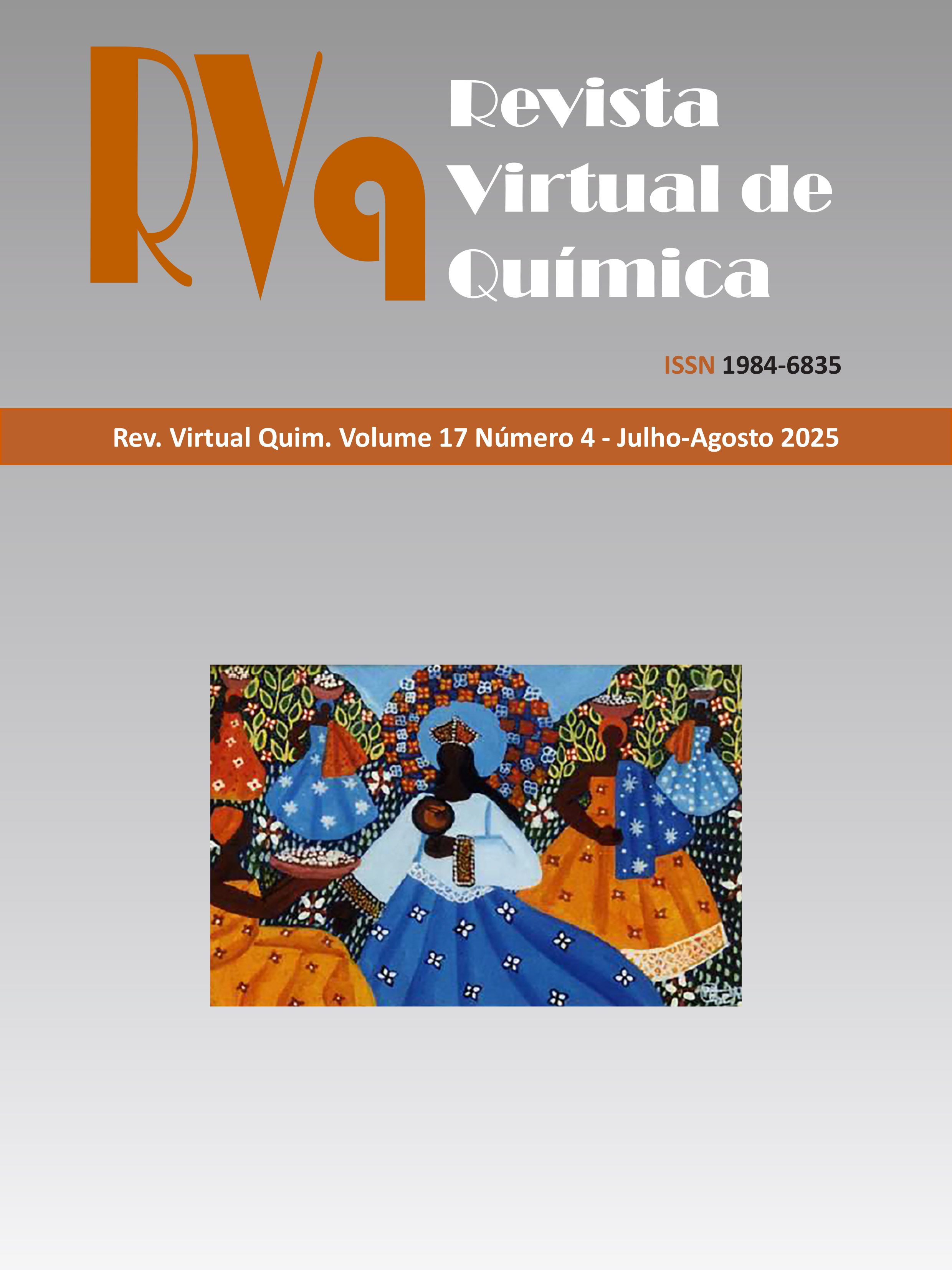Investigation on the Interaction Between μ-oxo Trinuclear Ruthenium Complexes and DNA
DOI:
https://doi.org/10.21577/1984-6835.20250030Resumo
The μ-Oxo-trinuclear ruthenium acetates are promising metallodrug candidates and have been evaluated for their cytotoxicity against certain cancer cell lines, as well as for their anti-parasitic activity against T. cruzi and vasodilator profile. Therefore, the interaction between fish sperm deoxyribonucleic acid (fs-DNA) and the clusters [Ru3O(CH3COO)6(pic)3]PF6 (1), [Ru3O(CH3COO)6(pic)2(H2O)]PF6 (2), [Ru3O(CH3COO)6(pic)2(CO)] (3), [Ru3O(CH3COO)6(py)2(H2O)]PF6 (4), and [Ru3O(CH3COO)6(H2O)3]PF6 (5) (pic 3 picoline; py pyridine) was evaluated by steady-state fluorescence and viscosity measurements and molecular docking calculations. The capacity of compounds 1-5 to displace the probes ethidium bromide (EB), acridine orange (AO), 4’,6-diamidino-2-phenylindole (DAPI), and methyl green (MG) was moderate to weak, with Stern-Volmer quenching constant (Ksv) values in the order of 103 to 104 M-1. The highest constants consistently occurred for the DAPI probe, indicating that all compounds are minor groove binders, agreeing with the molecular docking trend, which also showed that van der Waals forces were mostly responsible for the interaction. Compounds 2, 4, and 5, containing a labile water molecule in their structure, moderately changed the fs-DNA viscosity, signaling the possibility of coordinative binding. Finally, variation in hydrophobicity (presence or absence of a methyl group in the structure of the ligands) and charge did not lead to significant differences in the interaction profile.
Downloads
Arquivos adicionais
Publicado
Edição
Seção
Licença
Copyright (c) 2025 Revista Virtual de Química

Este trabalho está licenciado sob uma licença Creative Commons Attribution 4.0 International License.
Autores que publicam nesta revista concordam com os seguintes termos:
Os direitos autorais para artigos publicados nesta revista são do autor, com direitos de primeira publicação para a revista. Em virtude do acesso público, os artigos são de uso gratuito em aplicações educacionais e não-comerciais desde que com reconhecimento da autoria e da publicação nesta revista.

